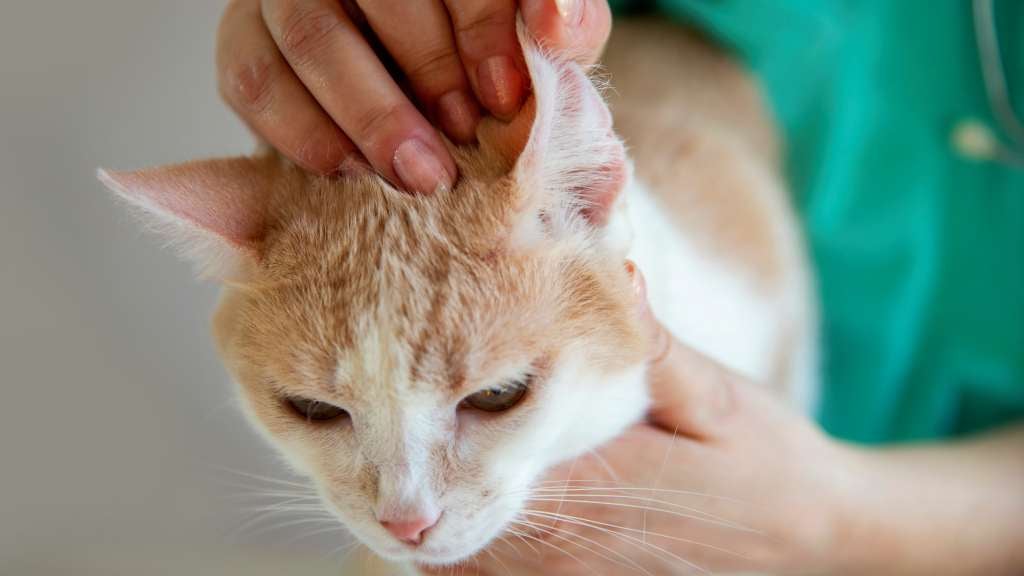Dr. Holly Boyden
BVSc (Merit) MANZCVS (ECC)

You’ve just noticed a lump on your cat – should you be concerned?
Skin lumps in cats are reasonably common, and can have a variety of causes including trauma, bacterial infection, parasites, or tumour growth. If you notice an unusual bump on your feline friend, it’s best to have it promptly assessed by your veterinarian. Early treatment of problematic skin lesions will minimise your cat’s discomfort and, in some cases, could even save their life!
Read on to learn more about some of the most common types of skin lumps on cats, including what to look for and how your vet can help.
With a variety of underlying causes, lumps can vary in appearance and might be associated with general unwellness symptoms. Some of the most common lump presentations in cats include:
Depending on how severe the trauma is, the cat may also show general weakness as well as pain.
Benign tumours are non-cancerous, so generally don’t cause issues unless they become irritated or grow large enough to press on vital structures.
Malignant tumours are cancerous, so will either invade into surrounding tissues or spread elsewhere in the body and cause illness.
While the tumours of each class are more likely to have certain characteristics (e.g. benign masses are more likely to have defined borders while malignant masses are more likely to be invasive into surrounding tissues), most tumours cannot be diagnosed on appearance or feel alone. In order to properly confirm a diagnosis, tumour cells need to be sampled and assessed under a microscope.
If you notice a new lump on your fur-bestie, it’s always a good idea to consult your vet to see if it’s anything to be concerned about. However, advice should be sought more promptly if your cat’s lump:
It’s important to seek urgent veterinary care if you suspect that your cat might have a paralysis tick, as tick paralysis can be fatal for our four-legged friends.
To get more information about a lump on your pet, your vet may want to perform a test known as fine needle aspirate cytology. This involves using a needle to collect cells from the lump to examine under the microscope. In some cases, your vet will be able to do this during a consultation, but other samples may have to be sent away to a lab for a specialist pathologist vet to examine.
Fine needle aspiration doesn’t always collect enough cells to allow a diagnosis. In these cases, your vet may go on to suggest a biopsy of your pet’s lump, which is a surgical procedure performed under anaesthetic.
If your pet’s mass is suspected to be a malignant tumour, your vet may also discuss imaging tests such as x-ray or ultrasound, so they can check for any visible spread of the tumour.
Lumps secondary to allergic reactions will often require a course of steroids and/or antihistamines to settle the inflammation.
Abscesses in cats commonly require surgery to drain and flush them out. Your cat will then be sent home with pain relief and potentially antibiotics too.
Ticks should be immediately removed with a tick-removing device, and your vet consulted to see if any further treatment is required for your cat.
If your cat has a significant traumatic injury such as a hernia, they will usually require imaging (such as x-rays or ultrasound) to determine the extent of their injuries, followed by surgical repair under anaesthesia.
If your cat’s lump is determined to be a tumour, your vet will make treatment recommendations based on the likely behaviour of the tumour – these range from simple monitoring of benign masses to surgical removal of malignant tumours, with or without further specialist oncology (cancer) treatments.
If your cat is sent home with medication, ensure you follow your vet’s instructions closely for the best and safest result for your pet. If you’re having trouble administering them, ask your veterinary team for help.
After any surgery, your cat will usually need to be kept confined indoors for at least 7-10 days, as allowing them to zoom about too soon may result in post-operative complications, such as the wound re-opening – ouch!
If you have any concerns about the healing of your pet’s treated lump (or lump removal site), such as the development of any redness, swelling or discharge, consult your vet.
You can minimise your feline friend’s chances of getting injured or bitten by keeping them safely indoors or confined to a cat-proof yard or ‘catio’ enclosure. Additionally, ensuring their flea and tick prevention is always kept up to date will help prevent parasitic skin issues and dangerous tick paralysis.
Otherwise, in addition to your feline friend’s annual health assessment, it’s a good idea to check them all over for any new lumps during regular grooming sessions. If you do notice any issues, consult your vet.
With good preventative care and vigilance on your part, and thorough assessments by your vet, any new lumps on your cat are more likely to become just ‘little bumps in the road!’.
Having pet insurance in place – before any signs or symptoms appear as a pre-existing condition may be excluded from cover – can help ease the financial stress of caring for a sick cat. That’s where Buddy Pet Insurance comes in! We’ve got your kitty covered for eligible vet bills, so you can keep the purrs coming and the chin scratches going strong.
17 Jun 2025